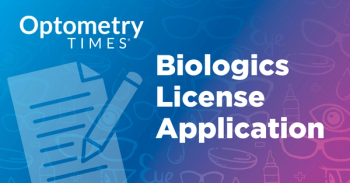
Alkeus Pharmaceuticals announces topline results from SAGA trial on GA treatment
The data showed a reduction in the GA lesion growth rate of 15.3% versus placebo from 6 to 24 months and a slowing in GA growth rate of 13.4% from baseline to 24 months.
Biopharmaceutical company Alkeus Pharmaceuticals announced topline results from study evaluating investigational oral therapy gildeuretinol (ALK-001) for the treatment of geographic atrophy (GA), secondary to age-related macular degeneration (AMD).1 According to the company’s news release, the double-masked, randomized, placebo-controlled SAGA trial found a statistically significant reduction in the GA lesion growth rate of 15.3% versus placebo from 6 to 24 months (p=0.047) and a slowing in GA growth rate of 13.4% from baseline to 24 months (p=0.075), which were the study’s primary endpoints.
The results were presented by SAGA principal trial investigator Alexander Melamud, MD, MA, who is a retina specialist and vitreoretinal surgeon with the Retina Group of Washington, during the 128th Annual Meeting of the American Academy of Ophthalmology this year.1
“One of the most exciting aspects of these results is that gildeuretinol is the first oral medication to show a meaningful positive effect on low luminance visual acuity in macular degeneration,” Melamud said in the release. “One of the first things patients lose in macular degeneration is low light vision, which can have a dramatic impact on daily living. The positive effect demonstrated on low luminance visual acuity (LLVA) is significant. Based on these results, this therapy would definitely have a place in the overall strategy of treating AMD and slowing the decline observed in our patients. The favorable safety profile could warrant treatment as early as possible.”
Additionally, the study found that visual function had improved, with 4.4 fewer letters lost (p=0.031) in LLVA over 24 months, which was the key secondary endpoint. The growth rate of GA lesions was assessed by fundus autofluorescence.1
“These data indicate a significant slowing of the growth rate of GA lesions, as well as reducing visual function decline,” said Seemi Khan, MD, MPH, MBA, chief medical officer of Alkeus Pharmaceuticals, in the release. “It takes a couple of months for gildeuretinol to replace vitamin A and achieve a therapeutic effect. Therefore, we are encouraged by the sensitivity analysis measuring the effect starting at six months of treatment. These data represent the first clinical demonstration that slowing vitamin A dimerization could be a target in the treatment of GA secondary to AMD. By slowing dimerization with gildeuretinol’s unique mechanism, we could reduce further damage to the retina at more advanced stages and possibly delay or prevent the onset of GA. We are excited by the potential of gildeuretinol as an oral therapy with functional benefits in GA, in addition to its potential to be the first therapy for Stargardt disease. We would like to thank the patients, investigators and trial sites for their participation in this study, as well as the National Institutes of Health National Eye Institute for providing funding for this study.”
Similarly to prior clinical studies of gildeuretinol in Stargardt disease, the safety and tolerability profile was favorable in the SAGA trial, according to Alkeus. For patients at risk of developing choroidal neovascularization or wet AMD, 11% of the gildeuretinol group experienced those adverse events, compared to 44% in the placebo group.1
“These data are meaningful and changing the conversation in the space about what might be possible with next generation treatments for patients with GA and earlier stages of AMD,” said Charles Wykoff, MD, PhD, retina specialist and director of research at Retina Consultants of Texas, in the release. “While the primary endpoint was not met, the anatomic efficacy signal appears real, and most interestingly there appears to be a consistent signal of functional preservation with treatment. This patient population could benefit tremendously from a safe and effective systemic treatment option.”
Reference:
Topline results from Alkeus Pharmaceuticals’ study of oral gildeuretinol demonstrate significant trend in slowing GA progression and visual function improvement. News release. Alkeus Pharmaceuticals. October 23, 2024. Accessed October 24, 2024.
https://alkeuspharma.com/topline-results-from-alkeus-pharmaceuticals-study-of-oral-gildeuretinol-demonstrate-significant-trend-in-slowing-ga-progression-and-visual-function-improvement/
Newsletter
Want more insights like this? Subscribe to Optometry Times and get clinical pearls and practice tips delivered straight to your inbox.










































